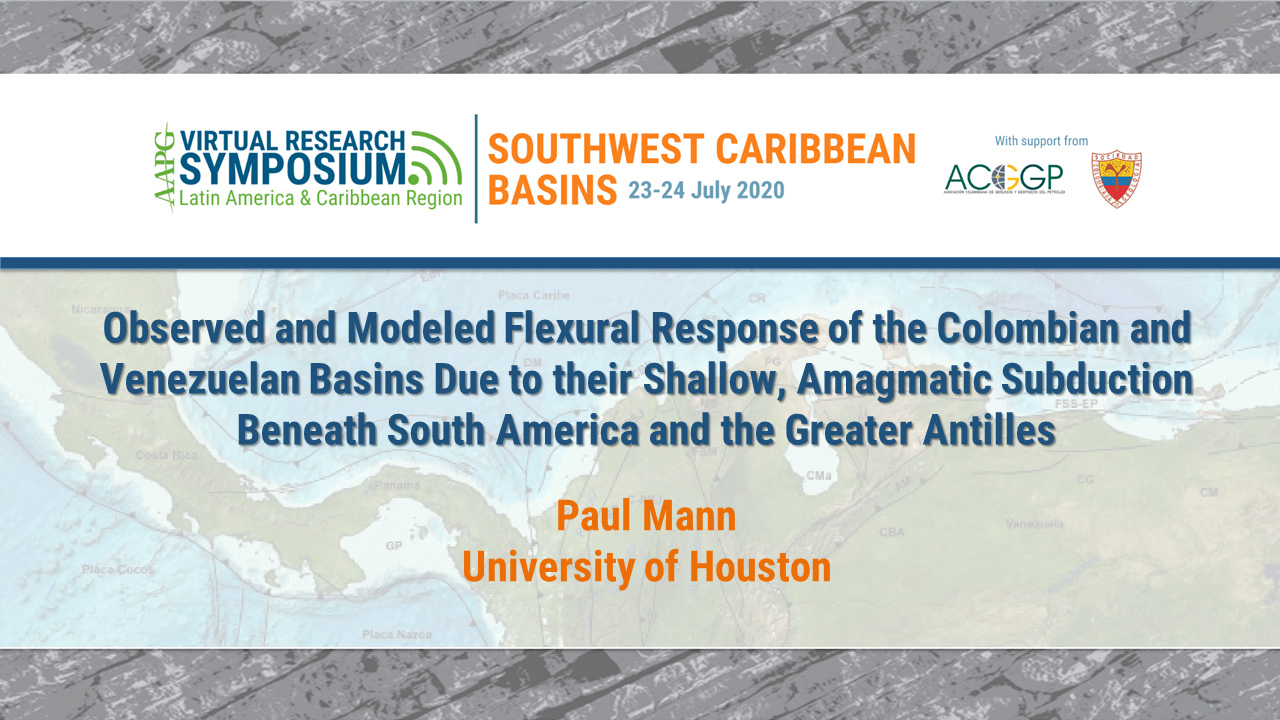
Summary
Authors: Weston Charles, Paul Mann (presenter), University of Houston
Previous geophysical and seismological studies have shown that oceanic and oceanic plateau crust of the Colombian and Venezuelan basins of the central Caribbean plate are shallowly subducting southeastward and southward along the South Caribbean deformed belt to a depth of 300 km beneath the northern margin of the South American plate. In addition, the oceanic and oceanic plateau crust of the Venezuelan basin is shallowly subducting northward along the Muertos trench beneath Hispaniola and Puerto Rico. Both subduction systems are amagmatic. We have constructed seven regional transects over distances of (800-1200 km) at right angles to the SCDB and Muertos trench using bathymetry, free-air gravity, depth to the top of the basement, and depth to Moho to model the observed and predicted flexural response of the subducting areas of the Colombian and Venezuelan basins. Our main results include: 1) the distance to the modeled peripheral bulge of the Colombian basin occurs ~ 230 km to the northwest of the SCDB and records the deflection of the thickened, Caribbean large igneous province (CLIP) basement; 2) Plate deflection increases eastward in the Venezuelan basin at ~ 600 m then gradually decreases towards the Aves Ridge - the eastern part of the peripheral bulge forms an arch that slopes westward and is a result of varying load magnitudes along the SCDB and Muertos Trench; and 3) elastic thickness decreases from (57-15 km) west to east which reflects thicker (20-26 km) continental-arc-oceanic plateau crust of the western Caribbean while thinner (4-9 km) normal and thinned oceanic crust of the eastern Caribbean shows greater flexural deformation.
Bio:
Paul Mann, University of Houston
Paul earned a BSc from the Oberlin College and a PhD from the State University of New York at Albany, both degrees in Geology.
He currently is Professor of Geology at the Dept. of Earth and Atmospheric Sciences, University of Houston, where he teaches, researches and supervises grad and undergrad students, and service to the EAS Dept. and other groups. He has also operated an oil industry-funded research group since 2005.
Paul is a member of AAPG, GSA, AGU, SEG and HGS.
Please log in to view or purchase the video presentation